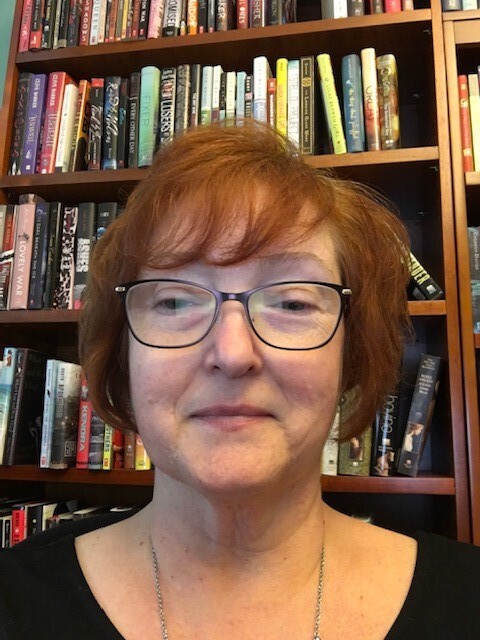Getting students to finish reading a book is hard.
Assigning specific texts that an entire class will enjoy is hard.
Poetry is hard.
Analysis is hard.
Mixing all of these things together and getting students to meet and exceed standards, build reading stamina, and enjoy literature is nearly impossible. Teaching with books in verse is one way to combat all of these difficulties.
I teach senior literature at all levels (including AP) and college classes at a local campus, and books in verse have become a saving grace for me and a favorite for students.
The first text we read as a class (each year) is a choice text. I give students a list of five books from which to choose. Each of these stories is told in verse form: incorporating classic poetic uses of rhythm, figurative language, while maintaining a narrative from one poem to the next. They are contemporary, easy to read, and offer great areas of rigor depending on student and teacher needs.
My Choices:
Long Way Down (Reynolds) is a story that takes place on an elevator where a kid has seven floors to determine if he is going to follow the “rules” or not in getting revenge for his brother’s murder.
Solo (Alexander) takes place in both Los Angeles and Ghana. A famous rock star’s son discovers secrets about his family and goes on a hunt to find the truth and himself. Alexander and Hess combine this intriguing story with lyrics from popular 80s music.
Poet X (Acevedo) is a beautiful story about a daughter who is finding her place in her mother’s religion while figuring out how her Hispanic culture fits into her Brooklyn world.
Brown Girl Dreaming (Woodson) is a memoir about Woodson’s time with her grandparents in South Carolina and her mother in New York.
Out of the Dust (Hesse) is a coming of age story set during the dust bowl is about a grieving father and a young girl who is struggling to come to terms with her mother’s death.
Prior to introducing the novels, we talk about poetry. Suggested guiding questions include: What is poetry? What does it look like? How does one know a poem is a poem? Are all songs poetry? Can a book be poetry? Who are their favorite poets?
I often hang blank sheets of paper on the walls, and have students respond to some of these questions on them. Then we start the conversations to which there are not many “correct” answers, but lots of great critical thinking is happening. Through these discussions, students are less afraid of poetry and are more open to reading this type of narrative.
The following day I provide the students with a summary of each novel, and then some sort of interview, TED Talk, or slam poetry to showcase each of the authors.
Jason Reynolds: Dear Dreamer
Kwame Alexander: The Power of Yes, Inside Solo, Excuse Me: Music Video
Elizabeth Acevedo: Hair, Being Present
Jacqueline Woodson: What Reading Slowly Taught Me
Karen Hesse: Interview
Sharing clips from the authors makes them human and “approachable.” Each of these texts, as well as many others, are stories about characters students “know” written by who authors are living and look like America. The students are now ready to choose their novel. I generally spend one day a week talking about their choice texts over the period of three weeks.
Book Club Ideas:
- I often give each book’s readers maybe 15 minutes to talk about their books. I share some questions that could apply to any of the books:
- Setting? What role does the setting play in the plot? Why this town? Why the house, elevator, steps, dustbowl, mansion? BE SPECIFIC.
- What are some themes you see that are emerging?
- Are the characters believable? Explain. Do you know any of these characters in real life?
- What is making you uncomfortable?
- What is hitting you the hardest?
- Which character would you like to meet? What would you talk about?
- What are you struggling with or dislike about the book thus far?
- Wild Card--what did I not ask that you want to talk about?
- Share favorite poems from books and talk about why.
- Spend a day talking about the use of white space. Where is the poem on the page? How is it written? What does the white space say?
- Depending on what the class needs, I might hand out a detailed list of poetry terms with definitions. I then ask students to find examples of the terms. Not only do they have to point out the term and its example, but they are tasked with explaining why that device was chosen. This is not an easy assignment. This is serious analysis. It is not enough that students paraphrase the device and its use, they have to figure out WHY that device was used.
- A suggested assignment from a student (shout out to Madison Conner) is having the students pick the poem that most stood out to them, and do whatever they want with it. That might be connecting the poem to something else, illustrating how they picture the scene, or students can write on how the figurative language and syntax affected the mood/tone.
At the end of this unit, students are more confident about their abilities to analyze and think about poetry. And, oftentimes, they will read some of the other titles on their own because of the class discussions. From this unit, we move into reading Shakespeare, pointing out similarities between the books in verse and his plays. Students get it, and are able to transition to more difficult texts. Ultimately, they learn that just maybe, books and poetry are not so hard, and finishing a story is not so bad when the reader is invested.





 RSS Feed
RSS Feed